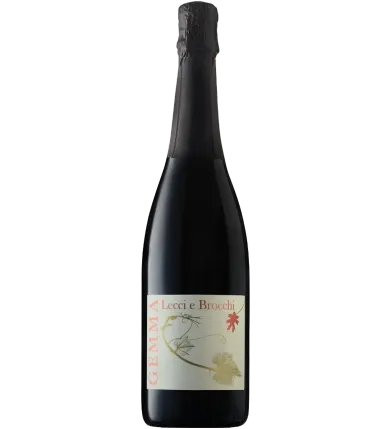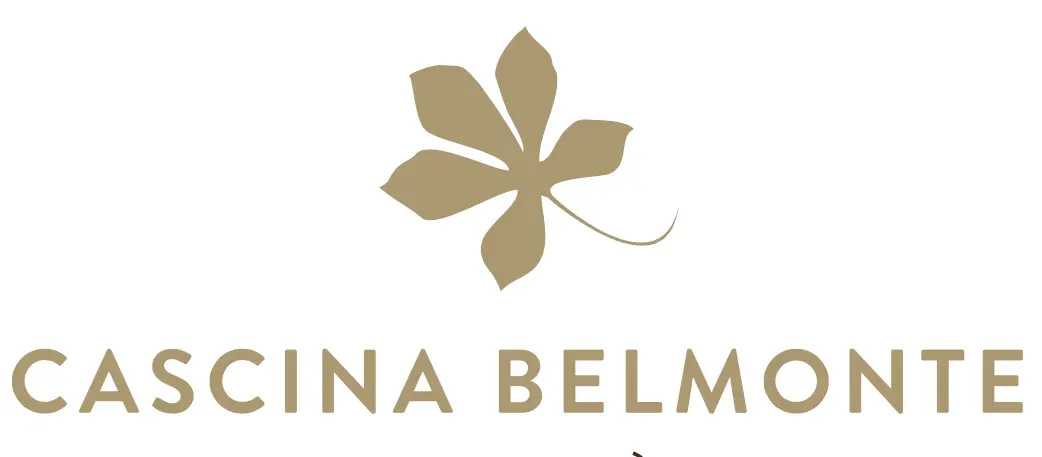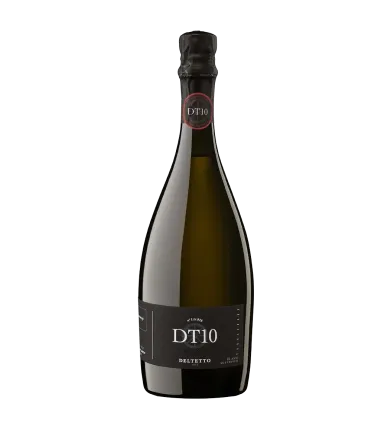Wines for New Year’s Eve 2026: 6 sparkling wines to toast with
Sparkling wine has long become a symbol of celebration: today, people all over the world pop a bubbly to mark special moments. A fun fact? A famous teetotaler, Dom Pérignon, was hired to get rid of those “awful” bubbles in Champagne… but his experiments didn’t have the intended outcome, and the bubbles were actually perfected! The same French nobles who, just years earlier, eyed those bubbles with suspicion—since in a very Catholic (and ignorant) France, bottles exploding under pressure were seen as wines of the devil—soon came to love the enchanting tingling sensation on the palate. The fashion for Champagne-style sparkling wine quickly spread across European courts, and popping a bottle became a status symbol that the rising bourgeoisie imitated. Time goes by, the trend remains, though far more democratic: in this article you’ll find 6 New Year’s Eve wines for every budget and taste… ready to try them?
Wines for New Year’s Eve 2026: Charmat-method sparkling wines
The Charmat method—also known as the Martinotti method after inventors Federico Martinotti and Eugène Charmat—is a tank refermentation technique used to produce sparkling wines. The base wine undergoes a second fermentation in sealed, pressure-resistant vessels, generally stainless steel, at a controlled temperature, usually between 14 °C and 18 °C, lasting from a few weeks up to about 3 months, depending on style and target cost. After fermentation, the wine is filtered isobarically to remove the yeasts and then bottled under pressure to preserve the naturally generated CO₂ overpressure. The Charmat method optimally preserves primary varietal aromas, favoring fresh and floral profiles. That’s why it’s especially used for aromatic grapes like Moscato (e.g., Asti Spumante DOCG) or semi-aromatic ones like Glera (e.g., Prosecco DOC).
Charmat-method Sparkling Wine “Gemma” — Lecci e Brocchi
This New Year’s wine is a carefree Tuscan Charmat-method sparkler born from Malvasia Bianca and Trebbiano Toscano. In the glass it’s bright straw-yellow, with a fine, persistent perlage; on the nose it releases white flowers, juicy pear, melon, and a hint of wild herbs. The sip is light, lively, and super drinkable, with a clean finish that invites another toast. Serve well-chilled: perfect for aperitifs, fried seafood, delicate crudo, and young cheeses.
Regioni: Toscana
Format: 750ml
Serving Temperature: 10
Price 19.8 €
Qty 1

Spumante Metodo Charmat "Gemma" Lecci e Brocchi
DescriptionGemma' sparkling wine is a product of the history and terroir of the area, produced by the Lecci e Brocchi winery, a small family business dedicated to making great wines.
The 'Gemma' Charmat method is a harmonious blend of Malvasia Bianca and Trebbiano Toscano, two grapes with an important acidity that makes them ideal for sparkling wines. This authentic and traditional Tuscan blend takes advantage of the fruity and inviting aromas of Malvasia to enrich the light character of Trebbiano. The result is a slim, lively and well-balanced wine with a fine and persistent perlage.
Harvesting is always done manually and begins at the end of August. This is the time when the Malvasia Bianca and Trebbiano Toscano grapes reach the optimum ripeness for the production of a quality sparkling wine, characterised by low sugar concentrations and high acidity.
At the winery, vinification begins with soft pressing of the grapes, followed by fermentation of the must at a controlled temperature of 18/20°C. The second fermentation takes place in an autoclave according to the principles of the Charmat method. At the end of the second fermentation, the wine is bottled and undergoes a brief refinement in the bottle before being released.
To the eye, 'Gemma' sparkling wine has a pale straw-yellow colour, crystal clear and bright thanks to its fine perlage. Its aroma is fruity, with clear notes of pear and white-fleshed fruit, as well as floral notes of white flowers. The fine, delicate bouquet is perfectly balanced by the right savouriness and freshness on the palate, allowing all the floral and fruity sensations perceived earlier to be savoured again.
The unique characteristics of 'Gemma' make it the ideal companion to enhance aperitifs, hors d'oeuvres and light first courses.
Read More

Designation of origin
Toscana IGT
Grapes
50% White Malvasia, 50% Trebbiano Toscano
Vinification
Soft pressing of the grapes, temperature controlled fermentation in steel tanks, second fermentation in autoclaves
Ageing
Short bottle ageing
Taste
Fine and persistent perlage, fresh and savoury, drinkable
Perfume
Pear, white-fleshed peach, apple, floral notes
When to Open
Wine to be consumed within 1-2 years
When to Drink
Good to drink freshly opened
Pairings
Fish starters, fish in tempura, sushi and sashimi, fish starters with shellfish
Company Name
Lecci e Brocchi
Production Philosophy
Organic
Charmat-method Brut Rosé “Ai tempi miei” — Tuttacoccia, Paride D’Angelo
This New Year’s wine is an Abruzzo Charmat-method Rosé made from 100% Montepulciano. It’s the easy-chic bubbly you open without overthinking: lively perlage, aromas of red berries with an ultra-fresh citrus streak. Winemaking is clean: gentle pressing, fermentation in steel, and a few months’ refermentation in tank to keep it fragrant and easy to drink. On the palate it’s dry, straight, and dangerously gluggable. Serve it cold for your aperitifs or even with pizza instead of beer… and above all, pair it with a New Year’s Eve spent with lots of friends.
Wines for New Year’s Eve 2026: ancestral-method sparkling wines
The ancestral method, also known as “sur lie” or “col fondo,” is an ancient sparkling technique in which an incomplete fermentation of the must is finished in bottle without disgorgement. Initially, the must ferments in vessels (stainless steel or similar) at controlled temperature, yielding a base wine like in other methods. Then fermentation is halted by lowering the temperature before all sugars are converted to alcohol. The base wine is bottled without clarification, thus retaining both autochthonous yeasts and the sugars that feed them—allowing fermentation to restart once the temperature rises. Bottles are kept in the cellar, in the dark at a stable temperature (about 12–15 °C), until the internal refermentation runs its course. The result is an unfiltered sparkling wine—cloudy only if shaken—marked by yeasty and citrus notes, with a fine, not overly abundant bubble. Recently, some ancestral-method sparklers sit halfway to the classic method: they use base wine plus bottle refermentation (often with selected yeasts) but simply skip disgorgement.
Catarratto Ancestral Method “Lumìe” — Baglio Diar
This New Year’s wine is a Sicilian ancestral-method sparkler from the hills of Salemi, made with Catarratto grapes harvested at night in early August. The wine naturally referments in the bottle and remains slightly hazy. In the glass it’s bright straw-yellow; on the nose, banana, green apple, elderflower, and a Mediterranean touch. The sip is agile and saline, more citrusy than the nose suggests, with a faint almond finish. It’s almost too easy to drink… Serve well-chilled: the perfect ally for fried foods, fish, and carefree aperitifs.
Semi-sparkling Rosé Ancestral Method “Oscillazioni” — Cascina Belmonte
This New Year’s wine is a natural, no-frills, great-value ancestral-method semi-sparkling rosé born on Lombardy’s ancient moraines, brushed by Lake Garda’s breath. Groppello, Barbera, Sangiovese, and Marzemino grapes are hand-harvested, then gently pressed to obtain the must. The first fermentation is in steel; the resulting wine is bottled with residual sugars, without fining, filtration, or added sulfites. No disgorgement: it stays hazy, with a fine, unobtrusive bubble. In the glass it’s deep pink, with aromas of small red fruits, yeast, and a citrus hint; on the palate it’s fresh, savory, and super smooth (13% abv). Serve around 12 °C: perfect for casual aperitifs, pizza, and tasty snacks… even seafood.
Regioni: Lombardia
Format: 750ml
Alcohol: 13%
Serving Temperature: 12
Price 17.4 €
Qty 1

Rosato Frizzante Metodo Ancestrale "Oscillazioni" Cascina Belmonte
Description"Cascina Belmonte's 'Oscillazioni' ancestral method is inspired by the ancestral method of fermentation, a practice handed down by our ancestors and now rediscovered with a minimal and authentic touch. The essence of the wine is revealed in the aroma of the must, a delicate dance of aromas of small red fruits that we find in the finished wine after the second fermentation. In the mouth it is fresh, with a savouriness that invites a second sip.
The red grapes used to make this sparkling rosé wine are grown using the Guyot training system on land formed during the Ice Age, characterised by the oldest moraines, recognisable by the softer contours of the hills on which they lie, smoothed by the action of time. The oenological journey begins with the manual harvesting of the grapes, which are gently pressed and fermented in steel tanks using selected yeasts. The elaboration of the ancestral method requires that the must, still in fermentation and therefore with residual sugars, is bottled without clarification, filtration or addition of sulphites, continuing its process in the bottle and thus producing the bubbles. At the end of fermentation, there is no sedimentation and the wine is therefore cloudy. It then matures in the bottle for 2 months.
An authentically natural product, known to the French as Pet Nat, but for Cascina Belmonte it is called Oscillations.
Light pink in colour, it has a complex bouquet of intense, fragrant red fruits, complemented by elegant yeast notes. On the palate, it is fresh and lively, with a persistent finish that invites you to sip with pleasure. The effervescence, present but not obtrusive, livens up the drink and makes it perfect for a more informal setting, accompanied by pizza, chips, an aperitif or a sandwich with a tasty salami. Oscillazioni is a symphony of emotions, a wine son of geography, of historical encounters, of the breath of the lake, of the winds that dance between the moraines, of the lemons and cypresses that decorate the landscape.
Read More

Grapes
Groppello, Barbera, Sangiovese and Marzemino
Vinification
Soft pressing, fermentation according to the ancestral method, first in steel tanks and then in the bottle at controlled temperature with selected yeasts.
Ageing
In bottle for two months
Wine Color
Sheer deep pink
Taste
Fresh and savoury entry, balanced palate with fine and unobtrusive bubbles, persistent finish
Perfume
Fragrant red fruit with hints of yeast and citrus fruit
When to Open
Wine to be consumed within 1-2 years
When to Drink
Good to drink freshly opened, consume within 3 days of opening
Pairings
Pizza and chips, bread with cold cuts, fish-based appetisers
Company Name
Cascina Belmonte
Production Philosophy
Organic
Wines for New Year’s Eve 2026: classic-method sparkling wines
The classic method also relies on bottle refermentation like the ancestral method, but allows the addition of a liqueur de tirage—containing sugars and selected yeasts—to trigger a more “controlled” second fermentation. After blending the base wines, bottling is done with a crown cap and a bidule to collect the lees. Over about 6 months, yeasts convert all sugars into alcohol, initially “stripping” the wine, then—through autolysis—releasing what was taken and enriching the aroma and taste profile over the following months. At the end of this aging on the lees, riddling (manual or mechanical) is performed: rotating the bottle into a vertical position so the lees settle into the neck and bidule. The neck is then frozen and the lees expelled. At this point, either the same wine (pas dosé/zero dosage) or a dosage mixture (wine, sugar, and other ingredients) is added before the final mushroom cork and capsule. Production costs are higher (reflected in the final price) and the sensory profile is more refined. After disgorgement, a quality classic-method sparkling wine improves for 5–10 years before entering its declining phase.
Classic-method Brut Rosé “Quirinus” — St. Quirinus
This New Year’s wine is a classic-method sparkler from Alto Adige made from PIWI grapes—disease-resistant varieties that St. Quirinus grows organically in Pianizza di Sopra, at 450–490 m, on calcareous moraine soils with gravel and porphyry. The cellar work is serious: first fermentation in steel at 18 °C, then bottle refermentation and 24 months on the lees. In the glass it’s salmon pink, with fine, persistent bubbles; it smells of wild strawberries, raspberries, and a touch of pastry. On the palate it’s straight, clean, and creamy, 12.5% abv. Serve at 12 °C: perfect for aperitifs and great with fish appetizers, tempura, and Asian cuisine.
Regioni: Trentino-Alto Adige
Format: 750ml
Alcohol: 12,50%
Serving Temperature: 12
Price 28.5 €
Qty 1

Spumante Brut Metodo Classico Rosé "Quirinus" St. Quirinus
DescriptionThe Metodo Classico Brut Rosé 'Quirinus' sparkling wine is produced by the St. Quirinus winery from Piwi vines, which are resistant to fungal diseases. These varieties originated in France when, in the second half of the 19th century and the first decades of the 20th century, it was decided to tackle the problem of fungal diseases and the catastrophic phylloxera.
Today, in Italy, this vine is most widespread in the Trentino Alto Adige region, and Michael Sinn, the winemaker at St. Quirinus, exploits its full potential to produce a sparkling wine with an appetising, lively character and pleasant aromas of red berries and bread crust.
The Piwi red berry varieties used for this sparkling wine are grown partly under pergola and partly under trellis on plots in Pianizza di Sopra, Alto Adige, at an altitude of 450-490 metres.
The soil is calcareous moraine with gravel and porphyry.
Harvesting is done entirely by hand and once in the cellar the grapes are destemmed and crushed as gently as possible. The must obtained ferments in steel tanks at a controlled temperature of 18°C. The base wine is then bottled using a process known as racking, which is essential for the second fermentation in the bottle according to the classic method. The sparkling wine then rests on its lees for 24 months before being racked.
In the glass, the Quirinus Brut Rosé has an enchanting salmon pink colour, enlivened by a fine, continuous perlage. Fresh and lively on the nose, with notes of strawberry, ripe raspberry and a hint of pastry, the bubbles are enveloping on the palate, with an upright, clean and creamy texture.
Versatile and seductive, it is perfect as an aperitif or with a wide range of dishes: from light starters to fish dishes and the refined creations of Asian cuisine.
Read More

Vinification
Destemming, crushing, first fermentation in steel vats at controlled temperature. Second fermentation in bottle using the classic method
Ageing
24 months in bottle on the lees before degorgement
Wine Color
Salmon pink with fine, continuous perlage
Taste
Palate with enveloping bubbles, vertical and uncluttered sip, creamy texture
Perfume
Fresh and lively, with notes of strawberry, ripe raspberry and a hint of pastry
When to Open
Ready to drink when released, it can continue to evolve well if properly cellared for up to 2-3 years
When to Drink
Good to drink freshly opened
Pairings
Fish starters, fish with vegetables, fish in tempura, Asian dishes
Production Philosophy
Organic
Alta Langa Classic Method Riserva Extra Brut “DT10” — Deltetto
This New Year’s wine is a signature classic-method sparkler from Piedmont, made from Pinot Noir and Chardonnay and aged a full 10 years on the lees (hence “DT10”). In the glass it’s intense straw-yellow, with extremely fine, tireless bubbles. On the nose it’s deep and mature: bread crust, yeasty notes, ripe fruit. On the palate it’s dry, broad, and very structured, with a very long finish that calls for another sip. 12.5% abv; serve chilled (6–8 °C): excellent with important dishes, fish, and shellfish—and perfect for the entire New Year’s Eve dinner.
Regioni: Piemonte
Format: 750ml
Alcohol: 12,50%
Serving Temperature: 6-8
Price 106.2 €
Qty 1

Alta Langa Metodo Classico Riserva Extra Brut "DT10" Deltetto
DescriptionThe Metodo Classico DT10 sparkling wine represents the pinnacle of the Deltetto winery, a limited edition of only 928 bottles produced for the 2010 vintage. DT10 is the first label in this exclusive selection, produced every 5 years, to celebrate 30 years of the family's production using the classic method. The year 1980 is particularly significant because it marks the beginning of Antonio Deltetto's extraordinary passion for the Metodo Classico, a tradition that has shaped the course of the winery's production.
The 10 years of late dégorgement, followed by a very long ageing on the lees, gives this wine an extraordinary depth and aromatic complexity; on the palate it is well-balanced and broad, with a lively and long finish. A bottle for connoisseurs, to be served at the table on important occasions.
DT 10 is made from Pinot Noir and Chardonnay, grapes from the family's best plots. The grapes are gently pressed in the cellar and fermented in temperature-controlled steel vats at 18°C. The second fermentation in the bottle, according to the Metodo Classico, takes place in temperature-controlled rooms at around 14°C, as for the other sparkling wines of the winery. DT 10 is then aged on the lees in the bottle for an impressive 120 months before being disgorged. In the glass, the sparkling wine is straw yellow in colour, with a very fine and persistent perlage. The aromas are complex and evolved, with intense notes of bread crust and yeast crust, enveloped by hints of ripe fruit. In the mouth, the entry is dry, the sip is broad and balanced, with considerable structure and an intense, long-lasting finish.
The Metodo Classico DT10 is an authentic family collection, a tribute to the winery's history of the Metodo Classico, to be drunk with important fish and shellfish dishes, offering a unique tasting experience.
Read More

Designation of origin
Alta Langa DOCG
Grapes
Pinot noir, Chardonnay
Vinification
Soft pressing, fermentation in steel vats at a controlled temperature, bottle fermentation at a controlled temperature
Ageing
At least 120 months in bottle 'sur lies' before disgorging
Wine Color
Deep straw yellow
Taste
Very fine and long-lasting perlage, ample and long-lasting sip, very structured, intense and long finish
Perfume
Complex and evolved aromas, bread crust, yeast peel, ripe fruit
When to Open
Ready to drink when released, it can continue to evolve well if properly cellared for up to 5-10 years
When to Drink
Good to drink freshly opened
Pairings
Fish-based first courses, risotto with fish and vegetables, grilled fish, fish in tempura
Production Philosophy
Organic
Tips for getting it right
You really can’t go wrong choosing an Italian sparkling wine for New Year’s! That said, think about how you’ll be celebrating to pick the right bottle: formal dinner, intimate evening for two, or a big family gathering? The occasion—and the people celebrating with you—is the most important part when choosing wine! Glasses, perlage, labels: the visual language of bubbles is social-friendly with perfect aesthetics, but remember not to make a mess when you pop the cork and don’t go flooding the room after a flashy sabrage… that’s considered bad manners. But then again… who cares! If you love making some noise or sabering with a spoon, who are we to stop you? Just buy a couple of extra bottles, because breaks and glasses can’t really be counted (or predicted)!
I truly hope this article helps! If you need purchase advice or pairing suggestions based on your New Year’s Eve 2026 menu, leave me a comment!
















Please complete your information below to login.
Sign In
Create New Account